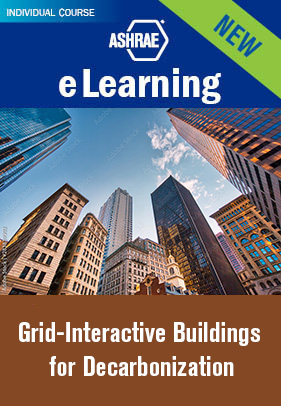Grid-Interactive Buildings for Decarbonization 1.5 PDHs (AIA)
 |
This course will provide information on how all buildings that have one or more controllable energy-consuming systems, such as heating, ventilation, and air conditioning (HVAC); thermal energy storage, electrical production, and battery storage, in conjunction with other technologies can make impactful adjustments to energy usage patterns with the right communications and controls infrastructure. 1.5 PDHs. (AIA) Non-Member Price: $65.99 |
Details
Smart, flexible, and interactive buildings will play an important role in scaling cost-effective decarbonization of the electric grid to achieve ambitious climate goals. These grid-interactive buildings use permanent, passive solutions, such as high-performance building envelopes, and active solutions that can react to temporary grid conditions via smart controls, energy storage, and other distributed energy resources (DERs). [Note: There are times to take advantage of the grid having high renewables as well as scaling back during other times.
In this course, learn how all buildings that have one or more controllable energy-consuming systems, such as heating, ventilation, and air conditioning (HVAC); thermal energy storage, electrical production, and battery storage, in conjunction with other technologies can make impactful adjustments to energy usage patterns with the right communications and controls infrastructure.
This course is designed primarily for engineers, building designers, owners, and facility management teams. This course will mainly focus on institutional, commercial, multifamily buildings, and plants and campuses, though many of the concepts apply to single-family homes as well.
By the end of this course, you should be able to:
-
List the potential value streams for grid-interactive buildings and describe how changes in operations can influence building-associated carbon emissions.
-
Evaluate the carbon intensity of the grid to inform demand management strategies.
-
Describe at least three strategies to increase a building’s grid interactivity and reduce operational carbon emissions.
-
Describe HVAC, water heating, and lighting control approaches for load shaping and event-based load shedding.
-
Use the guide to implement strategies to design grid-interactive buildings.
This course is accredited by AIA. It can be subscribed to independently.